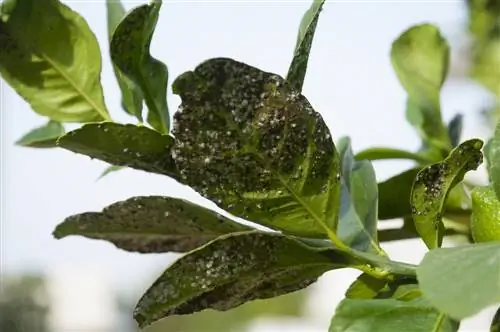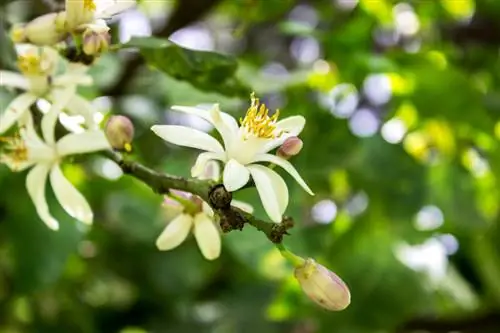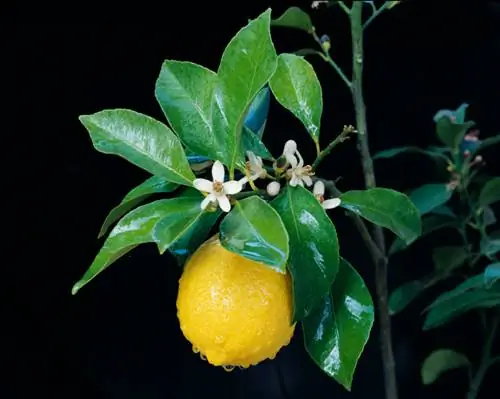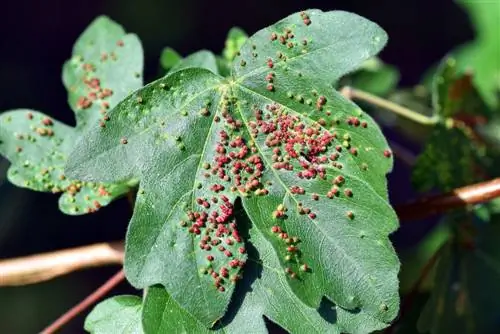- Author admin [email protected].
- Public 2023-12-16 16:46.
- Last modified 2025-01-23 11:22.
If the citrus tree has been attacked by pests, you should first try natural remedies and manual methods. If these measures have no effect, it makes sense to resort to biological sprays.

Which pests attack the lemon tree and how do you fight them?
Lemon trees can be attacked by pests such as black weevils, spider mites, scale insects and leaf miners. Natural remedies and manual methods are the first choice, although biological sprays can also be used if necessary.
Bigmouth Weevil
These dark brown colored and approximately 1.5 centimeter large flightless beetles are nocturnal and leave bay-shaped feeding damage on the edges of the leaves. The larvae living in the substrate are crescent-shaped and yellowish-white in color. They damage the roots of lemon trees.
Detecting and containing infestations
Place a cloth under the lemon tree and check it every morning. If disturbed, the beetles will drop so that you can easily collect them. If you repot the tree every two to three years, check the root ball for larvae. Nematodes, which are administered via irrigation water, prove to be an effective antidote.
Spider mites
The arachnids, which are approximately one millimeter in size, colonize the underside of the leaves and suck the plant sap from the cells. When air flows in, they appear silvery. The areas later turn gray. The fine webs between shoot tips and leaves are clearly visible. If it spreads uncontrollably, the leaves will dry out and eventually fall off.
Prevention and Control
Spray the plant regularly with low-lime water to increase the humidity and worsen the living conditions for the mites. Spray the pest insects away with a hard jet of water. To effectively combat spider mites on the lemon tree, you should use biological means.
Scale insects
This superfamily includes various pests that spread on lemon leaves when growing conditions are unfavorable. If the climate is not right, the composition of the plant sap changes and offers lice an attractive food source. They are a symptom and can be prevented if you adapt the framework conditions to your needs.
Possible causes of an infestation:
- Wintering in warm and dark rooms
- Heavily shaded outdoor location
- insufficient ventilation in the crown
- Humidity is in a low range
- Plants are weakened by over-fertilization
mealybugs and mealybugs
The females, which are approximately three millimeters long, protect themselves with a mealy wax layer under which they lay their eggs. They are freely mobile and colonize the undersides of leaves and leaf axils, where they suck out the plant sap. If the pest spread is low, it helps if you remove the insects. Dissolve 15 milliliters of spirit (€23.00 at Amazon) and curd soap in one liter of water and spray the product into inaccessible areas.
leather fly
The larvae eat their way through the leaf tissue, creating typical feeding passages. The silver-white to yellowish tunnels can be seen in the backlight. Fecal crumbs appear as dark spots. A severe infestation weakens the lemon tree, so you should remove infected leaves in a timely manner. If fly larvae appear in isolated leaves, you can crush them with your thumb and forefinger.






